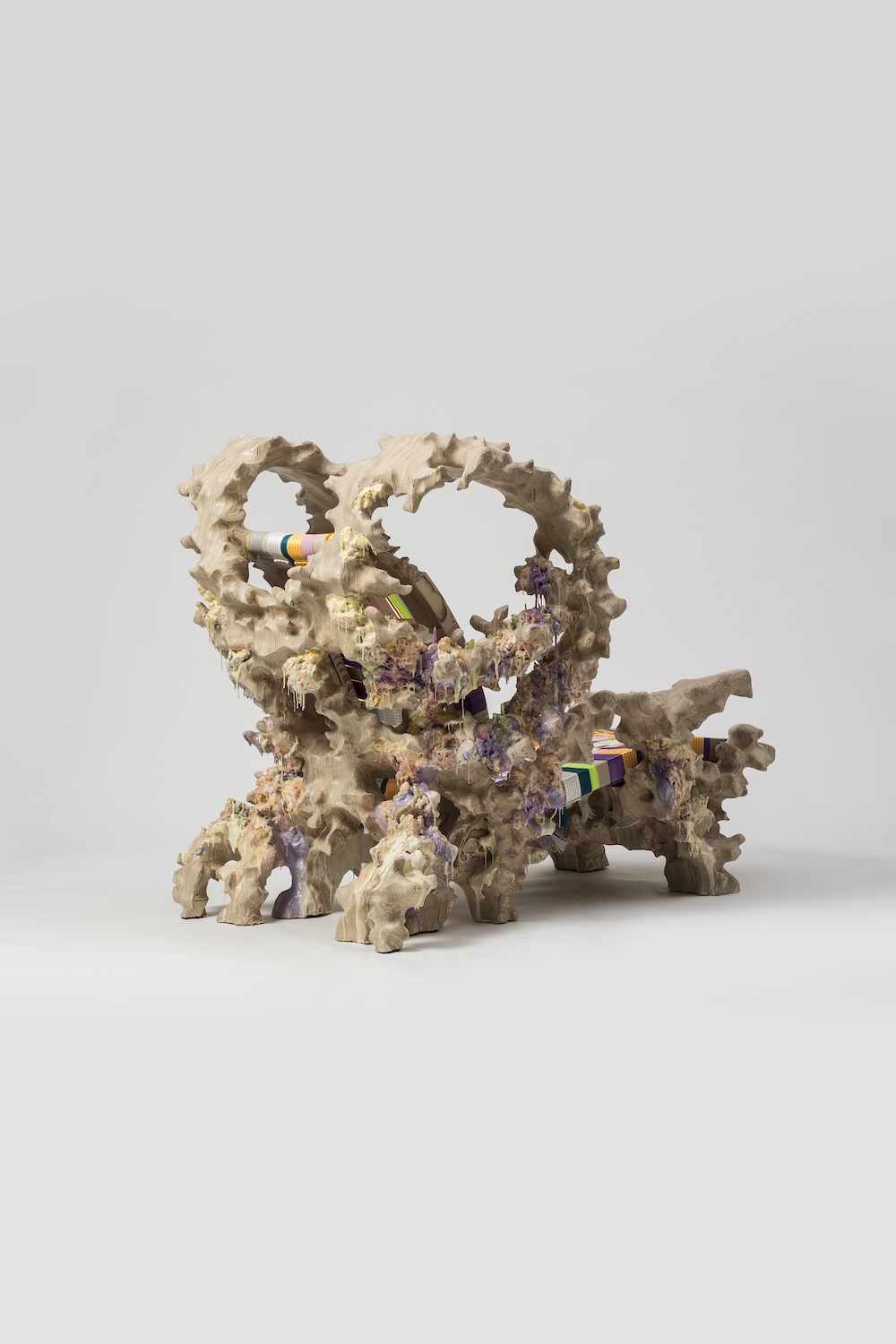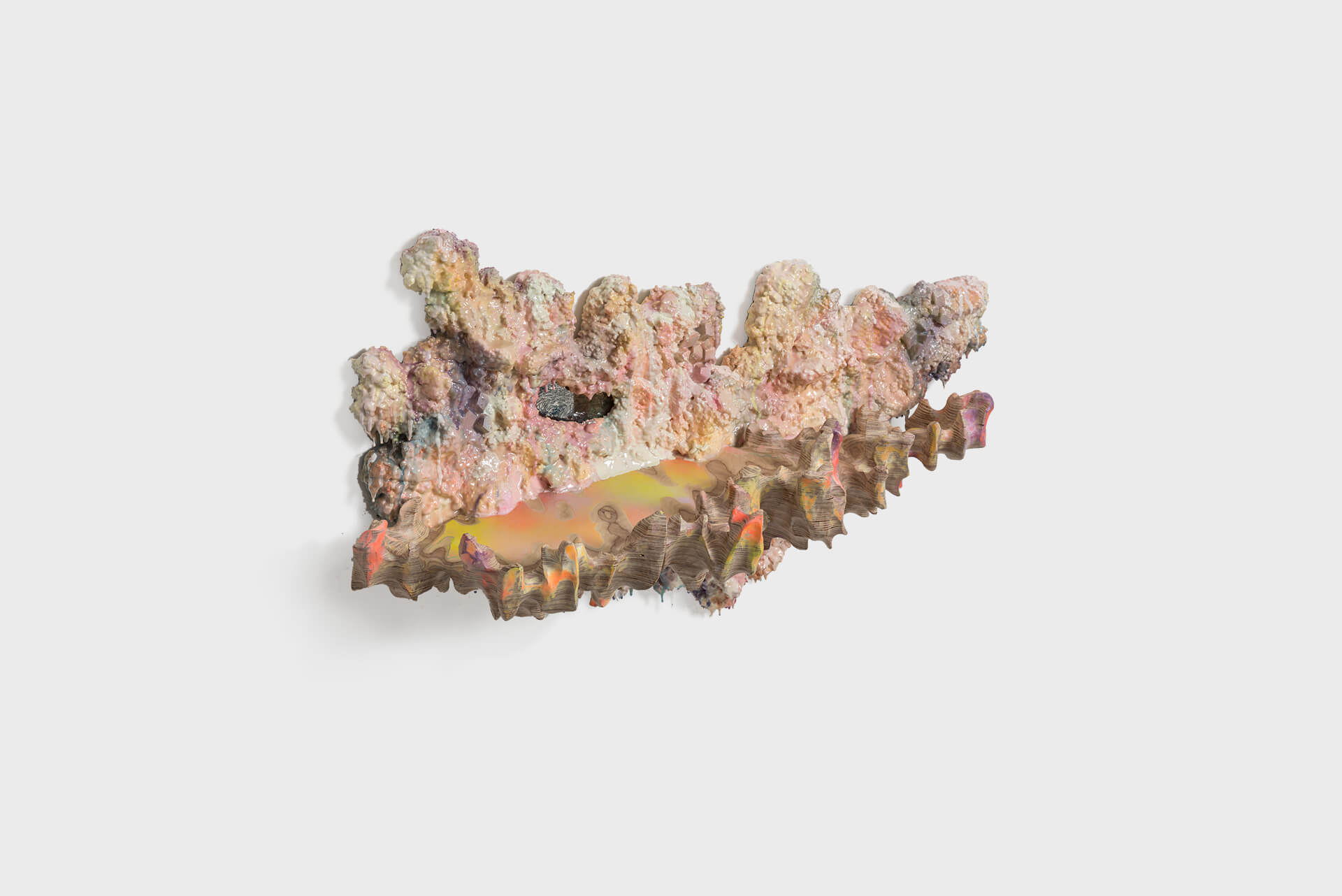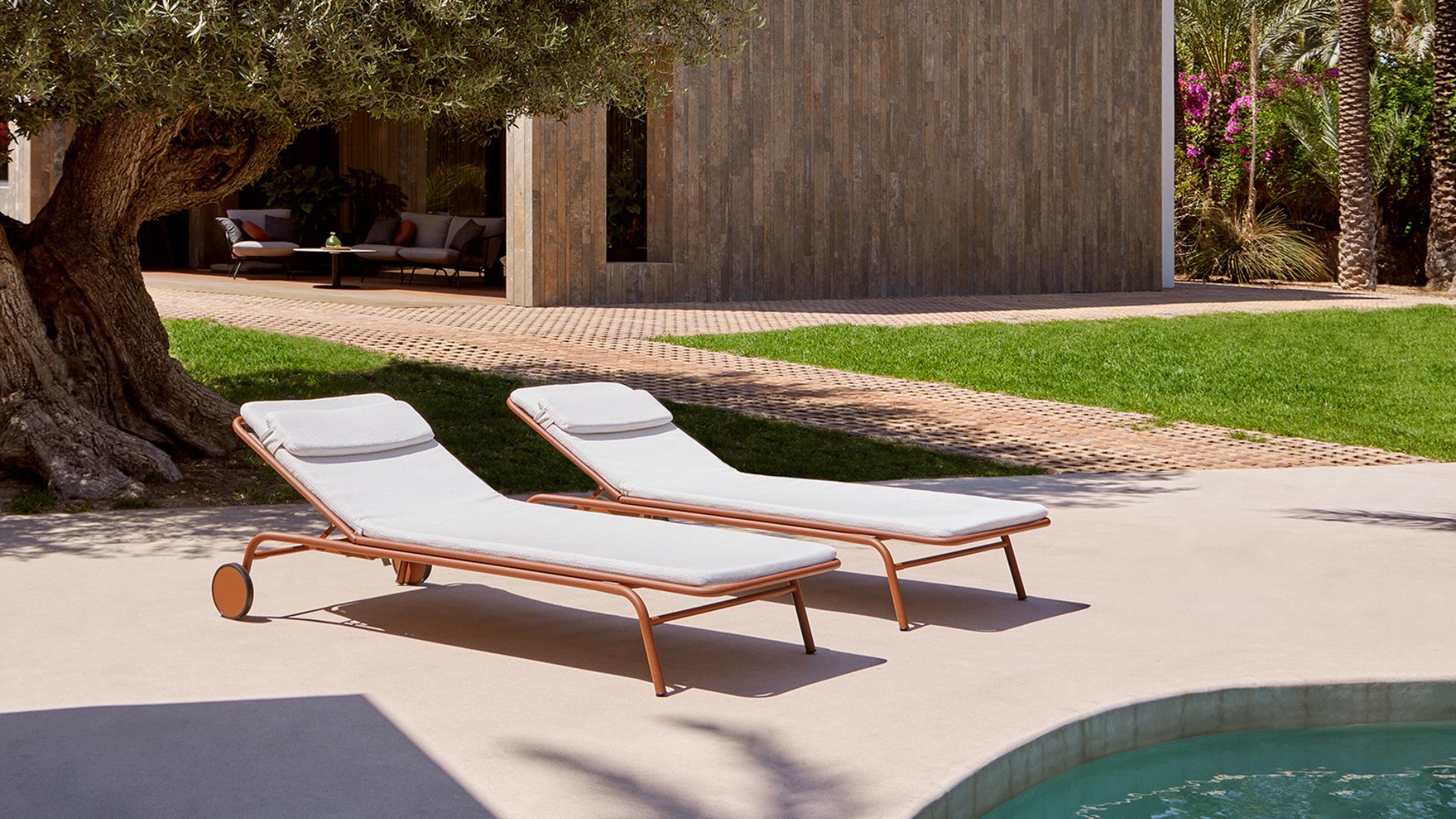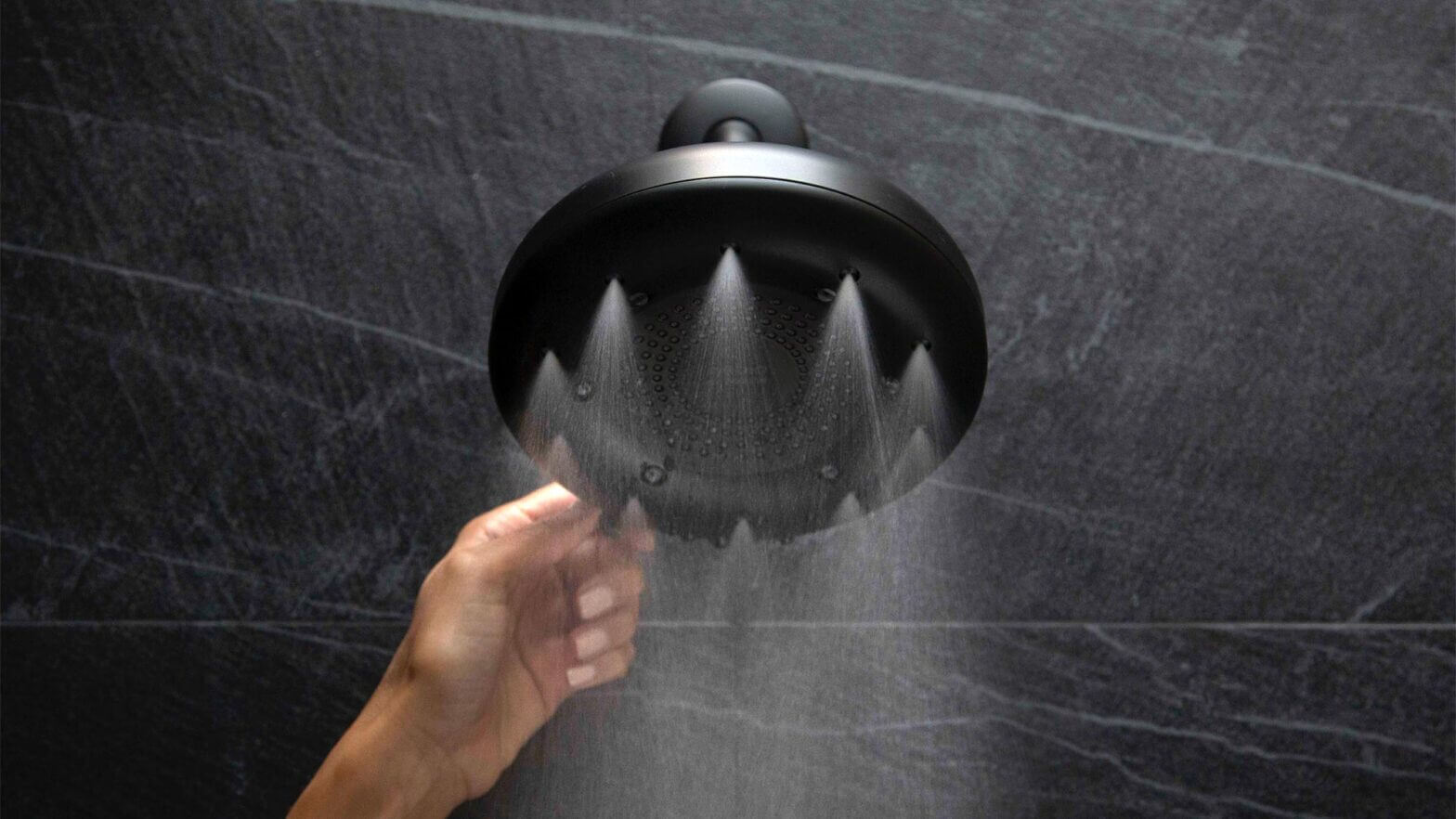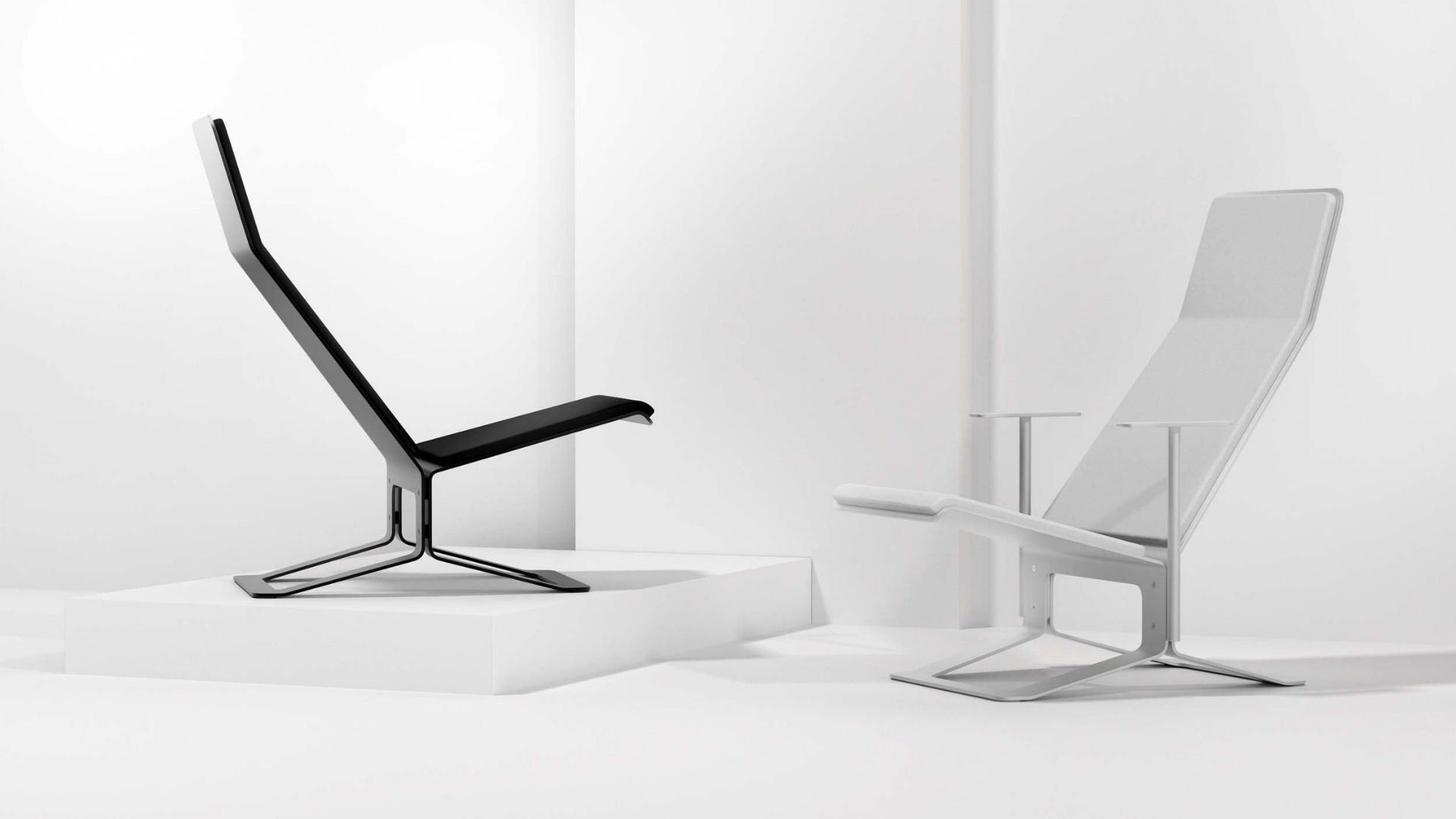Metamorphosis furniture rejects the uniformity of mass produced design
Podracky reformulates traditional design applications using discarded materials like old car parts, ceramic fragments and waste glass.

Who said designing furniture required fancy materials and expensive machinery? Here, experimental designer Tadeas Podracky demonstrates the value of unconventional resources and even stranger ways of making.
Unveiled during Dutch Design Week as part of the Design Academy Eindhoven graduation display, the “Metamorphosis” collection encompasses three functional art pieces: a chair, a table and a light. It derives from a period of quarantine when access to materials was limited so he began working with anything he could find around the studio.
Gallery
Open full width
Open full width
Most were common items from around Podracky’s home, including paint, textiles, spare car parts, broken ceramics and sheets of glass, styrofoam, and moss. The most striking is a lighting piece called Growth, which comprises a cage-like frame, from which Prodacky has hung wood and elements of woven fabric. Inside, a series of discarded headlights provide light.

The Rietveld chair is crafted from wood and covered in layers of black, white and yellow paint. Tadeas Podracky used a chainsaw to reveal layers of the wood inside, before sticking pieces of moss and mulch mixed with a blue liquid to the chair’s geometric frame, and sections of polystyrene and foam. The piece was inspired by the Red Blue Chair by twentieth-century Dutch architect Gerrit Rietveld, which Podrack has deconstructed both physically and ideologically.
Lastly, Podracky used recycled pieces of glass to make the Creating Through Destroying table, which features a top made from reconstructed broken fragments of porcelain to emphasise the collection’s statement against mass production and industrial manufacturing that result in unmemorable standardised products.
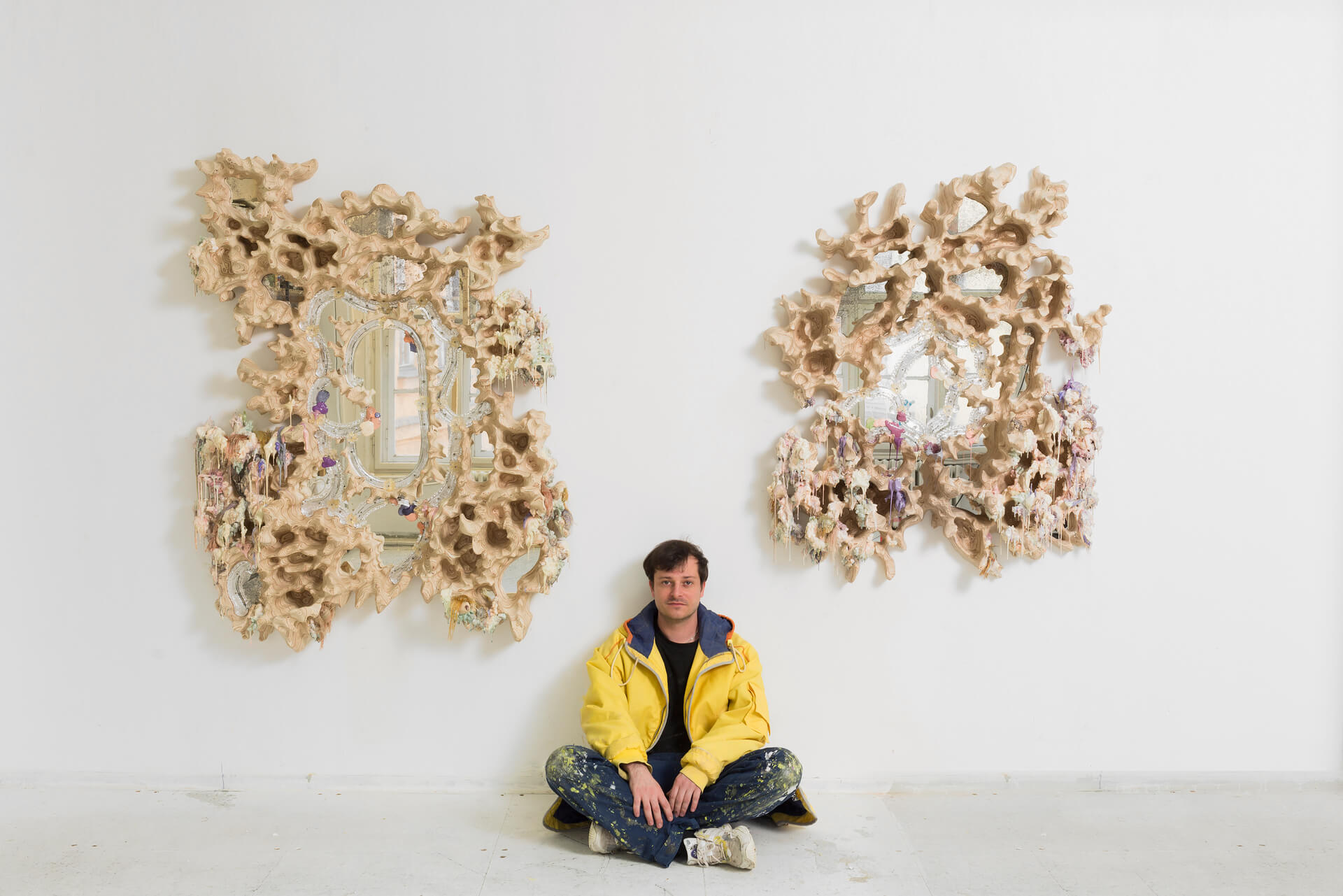
Tadeas Podracky’s “creating by destroying” technique adds much-needed personality
By questioning construction methods, Podracky puts emphasis on authenticity and revalues materials‘ ability to add character to our environment. This kind of approach is exciting, not least because it incorporates originality based on emotional decisions and unpredictability. The result is a collection of beautifully ugly pieces that feel incredibly authentic. We’ve never seen anything like this before.




